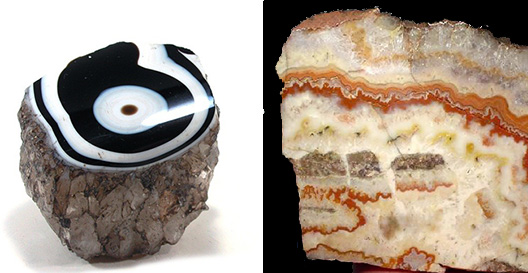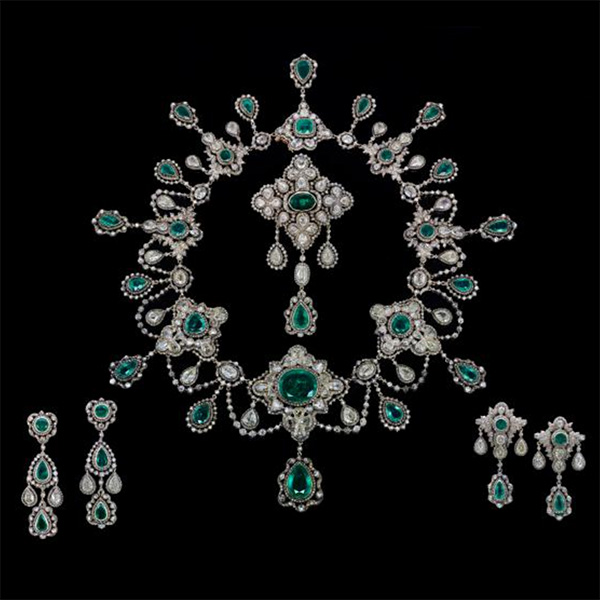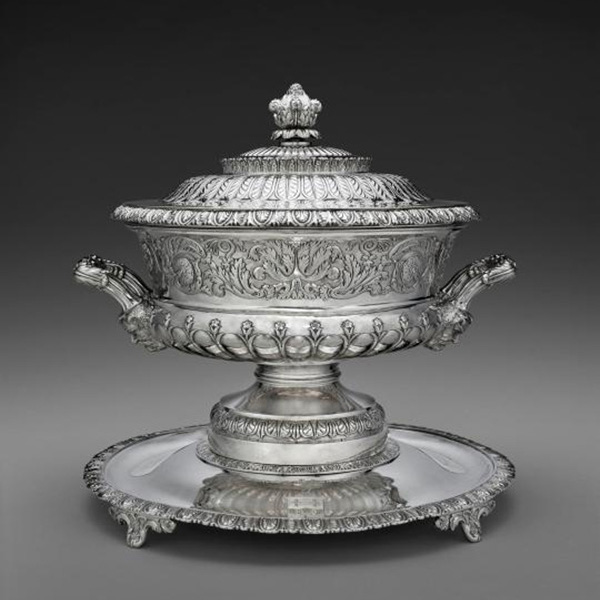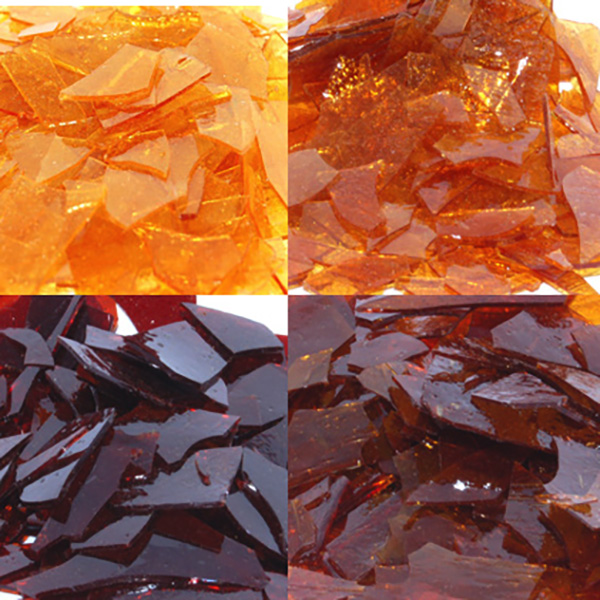Quartz and its Variations
Silicon is one of the most common elements found in the earth's crust and its most common oxide is SiO2, which is known as silica. Sand is largely made of silica. In crystalline form, it is known as quartz, but if it is melted and then cooled, it forms the amorphous material we know as glass. Quartz adopts a trigonal crystal system that has no center of symmetry in the arrangement of atoms. The result of this is that each crystal of quartz has a 'handedness' like a screw or a propellor blade that can be either right- or left-handed. This arises because the -Si-O-Si-O- chains form infinite spirals down the unique axis of the crystal. Please explore the interactive model of quartz to help visualize this. Also a result, quartz can be used for non-linear optical materials.
Quartz can adopt a variety of colors depending on the presence of various metal ions. Amethyst arises from irradiation, quartz that has trace impurities of iron replacing some silicon atoms. Before irradiation, the iron is in the +3 oxidation state, but high energy radiation causes it to lose an electron to the crystal lattice and it becomes Fe4+. The purple color will fade if the mineral is exposed to heat or sunlight and the sample will become colorless, yellow or pale green. A yellow or orange color is observed for the mineral citrine. The origin of this color is not clear but may also arise from irradiation. Some synthetic mimics of citrine have iron added to the quartz, but the optical properties of that material are not the same as citrine. This is also true of amethyst that is heated to create a yellow stone that is citrine-like but has different properties. Rose quartz usually is milky in appearance rather than fully transparent like the other quartz gemstones and its color is believed to arise from the presence of titanium, manganese or iron.

There are other naturally-occurring forms of SiO2. One is cristobalite, which adopts a tetragonal crystal structure. A more complex SiO2-based mineral class is chalcedony. Chalcedony is a cryptocrystalline material, which means that it is made of very tiny crystallites that are difficult to distinguish. In this case, the crystallites are a combination of quartz and moganite, another crystalline form of SiO2 that adopts a monoclinic crystal form. There are two well-known members of the chalcedony family – onyx and agate. These are both layered types of minerals but in onyx the layers are parallel while they are more irregular in agates. Onyx is most commonly black with some white striping, while agates adopt more varied colors.
Shortcuts
Credits for the Header Image
- Quartz, Photo by Pet Kratochvil, Public Domain.
- Rose Quartz Photo by xtinarson, Pixabay
- Amethyst, Photo by Juppi66,Wikimedia Commons, Public Domain.
- Citrine, Photo by Wela49, Wikimedia Commons, GNU Free Documentation License, version 1.2.
Crystal Structure Data
- Quartz: Levien L, Prewitt C T, Weidner D J, American Mineralogist 1980, 65, 920 - 930.
- Cristobalite: Downs R T, Palmer D C, American Mineralogist, 1994, 79, 9 - 14.
- Moganite: Heaney P J, Post J E, American Mineralogist, 2001, 86, 1358 - 1366.
Department of Chemistry

Houston, TX
6100 Main St., Houston, TX 77005-1827 | Mailing Address: P.O. Box 1892, Houston, TX 77251-1892 713-348-0000 |












